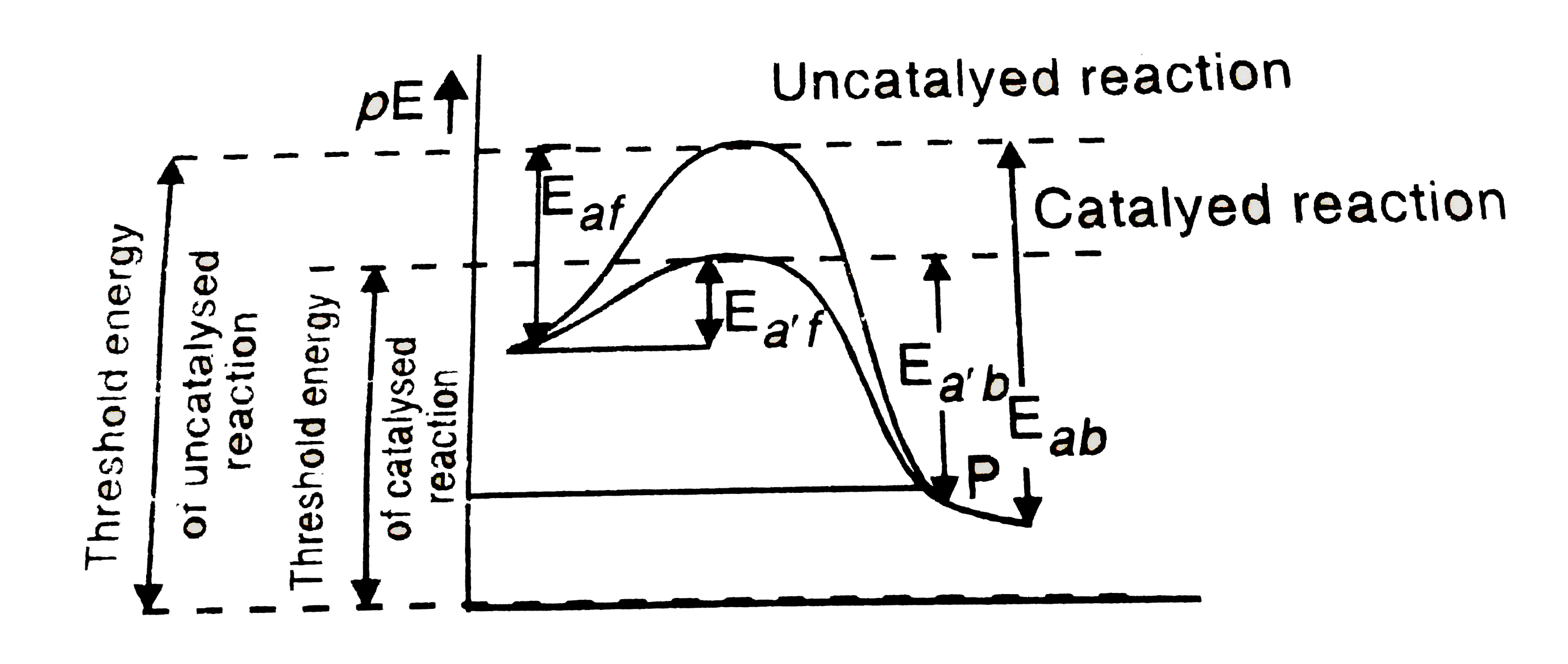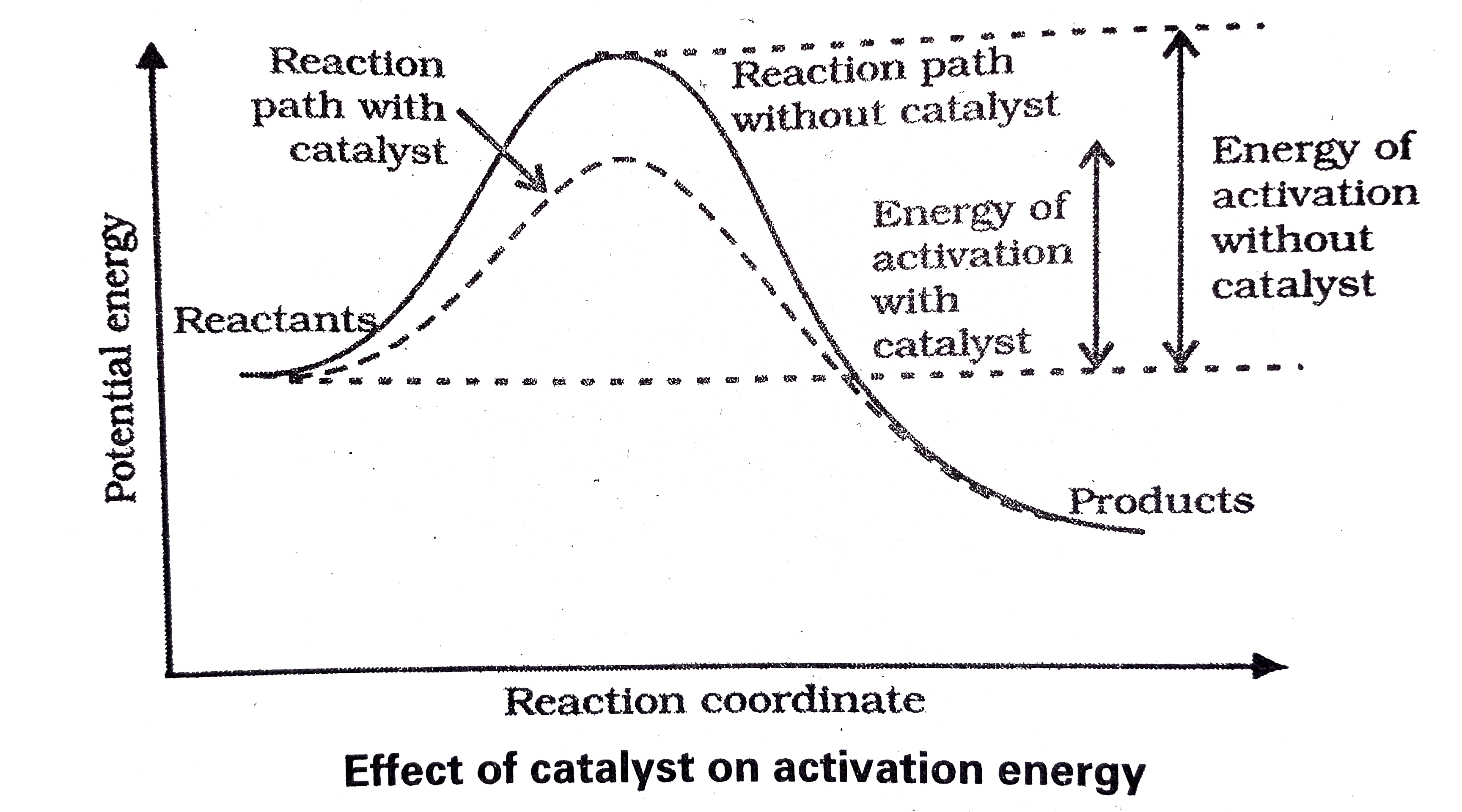Draw the graphs between potential energy - reaction coordinates for catalysed and uncatalysed reactions. Solution in Telugu
Topper's Solved these Questions
- BOOK - VIKRAM PUBLICATION ( ANDHRA PUBLICATION)CHAPTER - ELECTROCHEMISTRY & CHEMICAL KINETICSEXERCISE - SHORT ANSWER QUESTIONS25videos
ELECTROCHEMISTRY & CHEMICAL KINETICS
- BOOK - VIKRAM PUBLICATION ( ANDHRA PUBLICATION)CHAPTER - ELECTROCHEMISTRY & CHEMICAL KINETICSEXERCISE - LONG ANSWER QUESTIONS12videos
ELECTROCHEMISTRY & CHEMICAL KINETICS
- BOOK - VIKRAM PUBLICATION ( ANDHRA PUBLICATION)CHAPTER - ELECTROCHEMISTRY & CHEMICAL KINETICSEXERCISE - PROBLEMS55videos
ELECTROCHEMISTRY & CHEMICAL KINETICS
- BOOK - VIKRAM PUBLICATION ( ANDHRA PUBLICATION)CHAPTER - D AND F- BLOCK ELEMENTS AND CO-ORDINATION COMPOUNDS EXERCISE - INTEXT QUESTIONS33videos
D AND F- BLOCK ELEMENTS AND CO-ORDINATION COMPOUNDS
- BOOK - VIKRAM PUBLICATION ( ANDHRA PUBLICATION)CHAPTER - GENERAL PRINCIPLES OF MMETALLURGYEXERCISE - DAM SURE SAQ1videos
GENERAL PRINCIPLES OF MMETALLURGY
Similar Questions
What are galvanic cells ? Explain the woriking of a galvanic cell with a neat sketch taking Denicell cell as example.
View SolutionWhat are electro chemical cells ? How are they constructed ? Explain the working of the different types of galvanic cells ?
View SolutionThe standard potentials of some electrodes are as follows. Arrange the metals in an increasing order of their reductiong power.
1)K+/K=−2.93V 2)Ag+/Ag=0.80V 3)Cu2+/Cu=0.34V
4)Mg2+/Mg=−2.37V 5)Cr3+/Cr=−0.74C 6)Fe+/Fe=−0.44VView SolutionSilver atom has completely filled d-orbitals (4d10) in its ground state. How can you say that it is a transition element ?
View SolutionGive examples to differentiate roasting and calcination.
05:50View SolutionThe energy profile diagrams are very important tool through which, we predict lot of things, like the amount of activation energy of the catalysed and uncatalysed reaction as well as for the backward reaction and forward reaction. Thershold energy of the catalysed and uncatalysed reaction. The graphs representing the energy profile diagram for catalysed and uncatalysed reactions are given below : The graph of the lower energy barrier is the energy profile diagram for the catalysed reaction adn of the higher barrier is the energy profile diagram of uncatalysed reaction. From the graph, it is clear that E_(af) and E_(ab) are the activation energy of the respectively. E_(af) and E_(ab) are the activation energy of the catalysed forward and backward reaction respectvely The reaction which occurs by absorption of heat is known as endothermic reaction and by release of heat is known as exothermic reaction For exothermic reaction, Delta H is negative and for endothermic reaction, Delta H is positive From Arrhenius equation, we know that k = Ae^(-E_(a)//RT) where k is rate constant which signifies effective number of collisions. A is known as Arrehnius constant, or maximum rate constant of frequency factor which signifies maximum number of collisions with proper orientation of reacting species per mole per second. The catalysed reaction occurs at 500 K and the uncatalysed reaction occurs at 800 K in such way so that the rate of catalysed reaction and uncatalysed reaction becomes equal as well as the catalyst lower down the energy barrier by 60 J. Answer the following questions on the basis of above paragraph From the given above information what will be the threshold energy for the uncatalysed reaction, if the normal energy of the reactant is 40 J.
03:58View SolutionThe energy profile diagrams are very important tool through which, we predict lot of things, like the amount of activation energy of the catalysed and uncatalysed reaction as well as for the backward reaction and forward reaction. Thershold energy of the catalysed and uncatalysed reaction. The graphs representing the energy profile diagram for catalysed and uncatalysed reactions are given below : The graph of the lower energy barrier is the energy profile diagram for the catalysed reaction adn of the higher barrier is the energy profile diagram of uncatalysed reaction. From the graph, it is clear that E_(af) and E_(ab) are the activation energy of the respectively. E_(af) and E_(ab) are the activation energy of the catalysed forward and backward reaction respectvely The reaction which occurs by absorption of heat is known as endothermic reaction and by release of heat is known as exothermic reaction For exothermic reaction, Delta H is negative and for endothermic reaction, Delta H is positive From Arrhenius equation, we know that k = Ae^(-E_(a)//RT) where k is rate constant which signifies effective number of collisions. A is known as Arrehnius constant, or maximum rate constant of frequency factor which signifies maximum number of collisions with proper orientation of reacting species per mole per second. The catalysed reaction occurs at 500 K and the uncatalysed reaction occurs at 800 K in such way so that the rate of catalysed reaction and uncatalysed reaction becomes equal as well as the catalyst lower down the energy barrier by 60 J. Answer the following questions on the basis of above paragraph From the above information given inthe compreshension, if the normal energy of the reactant is 50 J and that of the product is 20 J. then what will be the activation energy of the uncatalysed backward reaction ?
02:13View SolutionThe energy profile diagrams are very important tool through which, we predict lot of things, like the amount of activation energy of the catalysed and uncatalysed reaction as well as for the backward reaction and forward reaction. Thershold energy of the catalysed and uncatalysed reaction. The graphs representing the energy profile diagram for catalysed and uncatalysed reactions are given below : The graph of the lower energy barrier is the energy profile diagram for the catalysed reaction adn of the higher barrier is the energy profile diagram of uncatalysed reaction. From the graph, it is clear that E_(af) and E_(ab) are the activation energy of the respectively. E_(af) and E_(ab) are the activation energy of the catalysed forward and backward reaction respectvely The reaction which occurs by absorption of heat is known as endothermic reaction and by release of heat is known as exothermic reaction For exothermic reaction, Delta H is negative and for endothermic reaction, Delta H is positive From Arrhenius equation, we know that k = Ae^(-E_(a)//RT) where k is rate constant which signifies effective number of collisions. A is known as Arrehnius constant, or maximum rate constant of frequency factor which signifies maximum number of collisions with proper orientation of reacting species per mole per second. The catalysed reaction occurs at 500 K and the uncatalysed reaction occurs at 800 K in such way so that the rate of catalysed reaction and uncatalysed reaction becomes equal as well as the catalyst lower down the energy barrier by 60 J. Answer the following questions on the basis of above paragraph Which of the following statement(s) is/are correct about the catalysed and uncatalysed reaction ?
02:23View SolutionThe energy profile diagrams are very important tool through which, we predict lot of things, like the amount of activation energy of the catalysed and uncatalysed reaction as well as for the backward reaction and forward reaction. Thershold energy of the catalysed and uncatalysed reaction. The graphs representing the energy profile diagram for catalysed and uncatalysed reactions are given below :

The graph of the lower energy barrier is the energy profile diagram for the catalysed reaction adn of the higher barrier is the energy profile diagram of uncatalysed reaction.
From the graph, it is clear that EafandEab are the activation energy of the respectively. EafandEab are the activation energy of the catalysed forward and backward reaction respectvely
The reaction which occurs by absorption of heat is known as endothermic reaction and by release of heat is known as exothermic reaction
For exothermic reaction, ΔH is negative and for endothermic reaction, ΔH is positive
From Arrhenius equation, we know that k=Ae−Ea/RT where k is rate constant which signifies effective number of collisions. A is known as Arrehnius constant, or maximum rate constant of frequency factor which signifies maximum number of collisions with proper orientation of reacting species per mole per second.
The catalysed reaction occurs at 500 K and the uncatalysed reaction occurs at 800 K in such way so that the rate of catalysed reaction and uncatalysed reaction becomes equal as well as the catalyst lower down the energy barrier by 60 J.
Answer the following questions on the basis of above paragraph
Which of the following statement(s) is/are correct for the catalysed and uncatalysed reactions ?02:21View SolutionGiven that the normal energy of the reactant and produce are 40J and 20 J respectively and threshold energy of the uncatalysed reaction is 120 J.If the rate of uncatalysed reaction at 400 K becomes equal to the rate of catalysed reaction at 300 K, then what will be the activation energy of the catalysed forward and backward reactions respectively ?
04:39View SolutionThe rate constant is given by Arrhenius equation.
k=Ae−Ea/RT
Calculate the ratio of the catalysed and uncatalysed rate constants at 25∘C if the energy of activation of a catalysed raction is 162 kJ and for the uncatalysed reaction the value is 350 kJView SolutionCalculate the ratio of the catalysed and uncatalysed rate constant at 20∘C if the energy of activation of a catalysed reaction is 20kJmol−1 and for the uncatalysed reaction is 75kJmol−1
01:26View SolutionThe activation energy for an uncatalysed reaction is less than that for a catalysed reaction. What do you conclude from the above statement ?
02:26View SolutionCalculate the log_(10) of the ratio of the catalysed and uncatalysed rate constant at 25^(@) C. If at this temperature the energy of activation of a catalysed reaction is 162KJ and for the uncatalysed reaction the value is 350 KJ (Assume frequency factor is same for both reaction)
02:13View SolutionConsider the following reactions at 300 K. A rarr B (uncatalysed reaction) Aoverset("catalyst")rarrB (catalyst reaction) The activation energy is lowered by 8.314"KJ mol"^(-1) for the catalysed reaction. How many times the rate of this catalysed reaction greater than that of uncatalysed reaction?(Given e^(3.33)=20)
02:10View Solution


